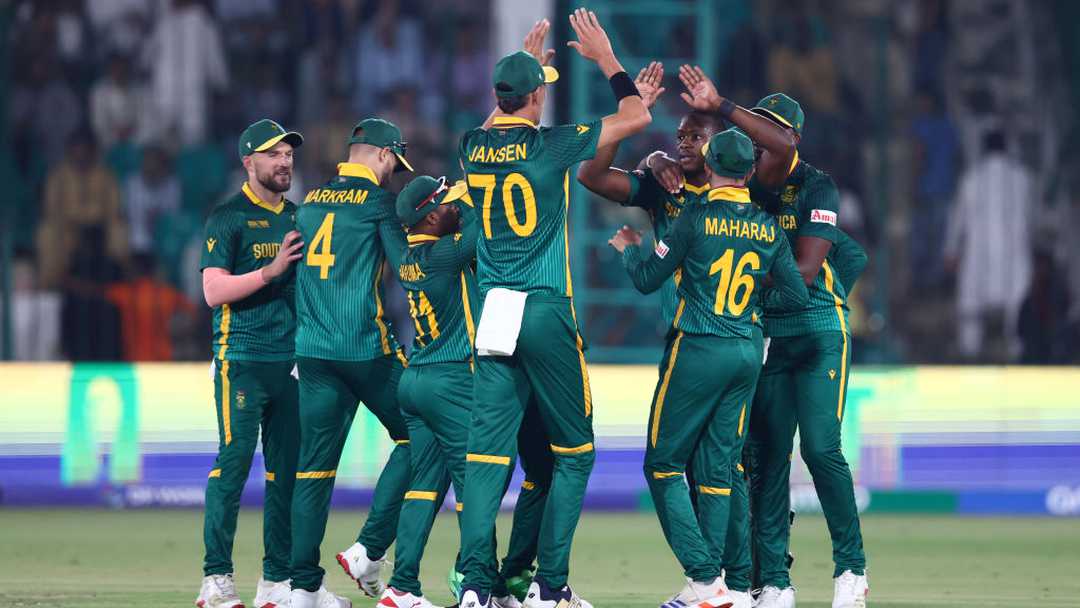
Two heavy-hitters suit up for a potential Rawalpindi run-fest
"We might need to make 400 if we bat first," Alex Carey told a press conference in Rawalpindi on Monday, the day before Australia's Champions Trophy match against South Africa.
In Karachi on Friday, South Africa's 315/6 was enough to beat Afghanistan by 107 runs. On Saturday in Lahore, England scored 351/5 – which was the tournament's record total until Australia chased it down with five wickets standing and 15 balls to spare.
Whatever happens when the Aussies and South Africans clash in Rawalpindi on Tuesday, do not expect a target of less than 300. Four of the dozen innings in the competition so far have passed that mark. These are two of the heaviest hitting batting line-ups in the Champions Trophy. And two of the attacks who have been the most impacted by injuries and other issues.
Cue runs. Hundreds of them. Might the record aggregate in a men's ODI be in danger? That's an unsurprisingly tall order: it's currently 872.
But it isn't out of the question considering the likely conditions and the fact who set the record – Australia made 434/4 and South Africa replied with 438/9 with a ball to spare at the Wanderers in March 2006. That marked the first time 400 was breached. It's now happened 27 times.
Eight of those elephantine totals have been made by South Africa and two by Australia. India have done it seven times, England five times, Sri Lanka and New Zealand twice each, and Zimbabwe once.
The Aussies have conceded 400 three times and the South Africans twice. It's happened four times to West Indies, thrice to Sri Lanka and the Netherlands, twice to India, Pakistan and Ireland, and once to New Zealand, Bangladesh, Zimbabwe, Afghanistan, the United States and Bermuda.
Teams who have racked up 400 and more have won 24 of those 27 ODIs. Besides that outrageous day at the Wanderers in March 2006, the exceptions have been when Sri Lanka's 411/8 wasn't enough to hold India in Rajkot in December 2009, and at Chinnaswamy during the 2023 World Cup. DLS revised New Zealand's 401/6 to a target of 342 in 41 overs. Pakistan were 200/1 after 25.3 – 21 runs ahead of par at that stage – when the rain returned and stayed.
Carey was joking when he made his quip about needing 400, but there can be no missing the dark lining of seriousness in his silver cloud of humour. He knows, as everyone else involved will, that these teams have done it before and could do it again.
Especially as both teams have proven themselves as contenders for the semifinals. That wasn't certain when Australia arrived not only depleted but having lost all four of their previous ODIs. The South Africans had lost six on the bounce, albeit with teams weakened by injuries and franchise T20 commitments.
What with England, the other side in the group, having beaten in seven of the eight white-ball games they had played in India in the preceding 21 days, the Afghans – who had won eight of their previous 10 completed ODIs, including two of the three they played against South Africa in Sharjah in September – looked likely to sweep into the semis without fuss.
Friday's result ripped up that script, and Saturday's sharpened the focus on Tuesday's showdown. Not for the first time, Australia and South Africa will clash in a consequential match at an ICC event.
Victory will all but confirm a place in the final four. Defeat will make that team's last group game all but unloseable if they want to stay in the running. Rain could get in the way, but if it doesn't whoever bats first might indeed need 400.

